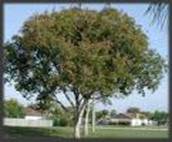| Kingdom | Plantae |
| Unranked | Angiosperms |
| Unranked | Eudicots |
| Order | Sapindales |
| Family | Meliaceae |
| Genus | Swietenia |
| Species | S. mahagoni |
| Binomial name | Swietenia mahagoni |
Other Common Names:
The other common names for mahogany tree are West Indian Mahogany, Spanish mahogany, Madeira redwood, Acajou,Caoba, Caoba de Santo, Cheria mahogany, Cuban mahogany, American mahogany, True mahogany, small leaf mahogany, Dominican mahogany and Indian Mahogany.
History
In India, the cultivation of this species was 1st attempted in 1795 when plants from the West Indies were introduced into the Indian Botanic Gardens. It was subsequently largely propagated by layering until 1865. Thereafter, arrangements were made for consignments of seeds from the West Indies, and the tree was established with various degrees of success in many parts of India. The wood from several different unrelated trees is called "mahogany" in the trade. Some of these woods have no more in common with true mahogany than color.

Description
West Indies mahogany is a grand tree with a broad, dense symmetrical crown and a straight trunk often buttressed and swollen at the base. The leaves of mahogany are unique among North American native trees: They are even-pinnate compound, with three or four pairs of asymmetric leaflets and no leaflet at the tip.



Range
Mahogany is native to the New World tropics. West Indies mahogany occurs in the West Indies, Bahamas and South Florida. In Florida, West Indies mahogany is restricted to tropical hammocks in parks and preserves on the Upper Florida Keys, and on the mainland in upland coastal hammocks in Everglades National Park.
Habitat
It thrives best on deep, rich soil and avoids stiff, heavy soils; well-drained sandy soils are best. It is a complete failure in dry localities and poor soils. Found in dry or moist forest, often on limestone.
Cultivation
Indian Mahogany is mostly propagated through seeds. It requires partial shade or full Sun for its growth. It needs water periodically. It looses its leaves at the end of the winter. The new leaves start growing after two three weeks. The new leaves are reddish purple in colour, which turn yellow green afterwards. Seeds are sown in spring in a greenhouse. When they are large enough to handle, prick the seedlings out into individual pots and grow them on in a greenhouse for at least their first winter. Plant them out into their permanent positions in late spring or early summer, after the last expected frosts. Cuttings of half-ripe wood take place in July/August in a frame.
Flowering Season
The flowers of the mahogany tree which are white in colour are in bloom from January through February.
Pests and Diseases
The mahogany web worm (Macalla thyrsisalis) causes defoliation and webbing. The mahogany shoot borer (Hypsipyla grandella) bores into the buds, shoots and stems; in Asia, H. robusta attacks the tree. The coffee tree borer (Apate monachus) attacks both live and dead trees, penetrating deeply into branches, deforming trunks and making them susceptible to breakage in high winds. A caterpillar and the snout beetle (Pachnaeus litus) attack the tree. This beetle attacks the seed capsules. Heart and butt rots are common in older trees, apparently entering through basal scars and branch stubs. In Puerto Rico, leaf blight (Phyllosticta swietenia) results in defoliation under humid nursery conditions. Diseases of seedling nurseries in Haiti include leaf spot, anthracnose, leaf blister, damping off and stem blight.
Parts Used

The wood from the bark and the leaves are the most commonly used parts of the tree for its commercial and medicinal purposes.
Medicinal Applications


• The bark extracts are used as an astringent for wounds.
• It is used to cure malaria, anemia diarrhea, fever, dysentery and depurative.
• The leaves contain several limonoids; seven phragmalin limonoids of swietephragmins A-G as well two other different types of 2-hydroxy-3-O-tigloylswietenolide and deacetylsecomahoganin.
• The bark is considered an astringent and is taken orally as a decoction for diarrhoea, as a source of vitamins and iron, and as a medicine to induce haemorrhage.
• When the bark is steeped to a red liquid, it is taken to clear blood, increase appetite, and restore strength in cases of tuberculosis.
• Poultice of the green powdered wood has been applied to sores, cuts, wounds and burns.
• It has also been sprinkled on syphilitic sores.
Commercial Applications


• Its wood is used in making furniture, fixtures, musical instruments, inlay, boat, caskets and many more.
• Its wood is a very popular material for drum making.
• A red dye is obtained from the inner bark.
• The wood is therefore the choice for high-quality furniture and cabinetwork, joinery, boats and pattern work.
• It often is used in parks and commercial landscapes, and around parking lots.

Some of the Conchs and Bahamians cut down virgin mahogany and dogwood forest of the upper Keys to plant pineapples. There were stories told in Coconut Grove by a local historian and native, the late Esther Mae Armbrister, about the selection of a special mahogany tree used as coffins and the burial practices of black people. These people made up the bulk of the labour force in this lucrative industry as more migrated from the Bahamas to the Florida Keys.